The angelic white blooms of gardenia can bring elegance and redolence to your garden. Want to learn how to grow these perennials successfully? In this post, we will teach you instructions for planting and caring for gardenias. Even if you are a novice gardener, you will soon be enjoying their lovely blossoms.
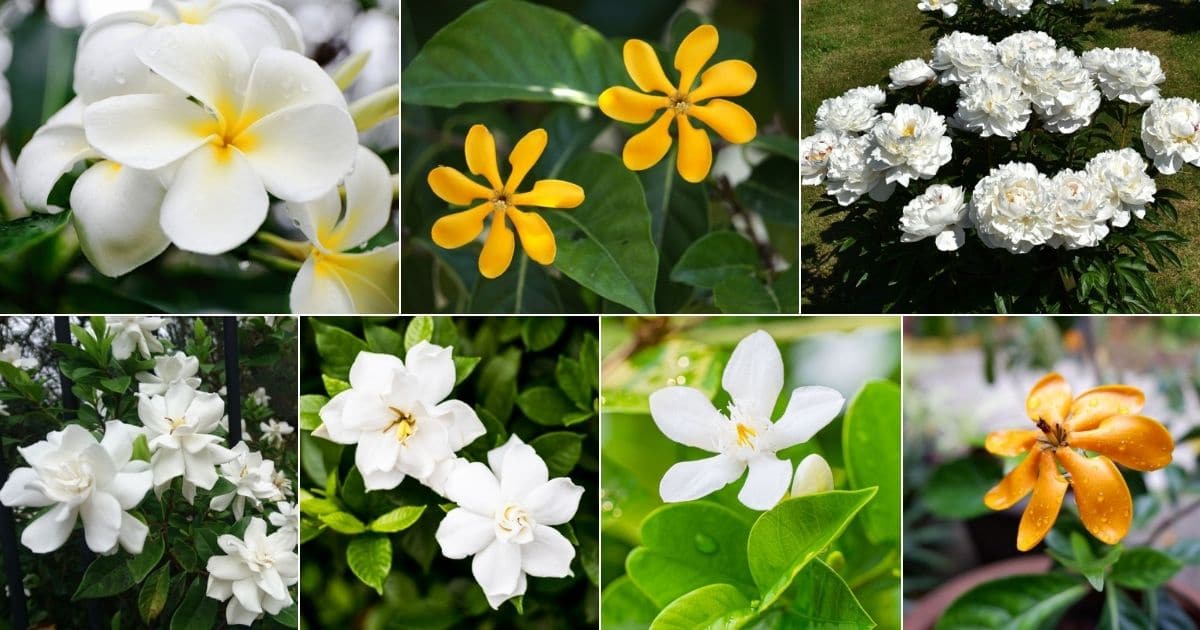
Jump to the section you need in the advanced jump below, or read on for the entire guide to growing gardenias.
Jump to:
- What Are Gardenias?
- Gardenia Basics
- Where Do Gardenias Grow?
- Why Grow Gardenias?
- Gardenia Landscaping Ideas
- Recommended Gardenia Varieties
- When Do Gardenias Bloom?
- How Long Do Gardenias Bloom?
- When to Plant Gardenias
- Ideal Growing Conditions for Gardenias
- How to Plant Gardenias
- How to Care for Gardenias
- How to Divide and Transplant Gardenias
- Are Gardenias Vulnerable to Diseases or Pests?
- Recommended Planting Combinations for Gardenia
- Frequently Asked Questions About Growing Gardenias
- Where to Buy Gardenias
What Are Gardenias?
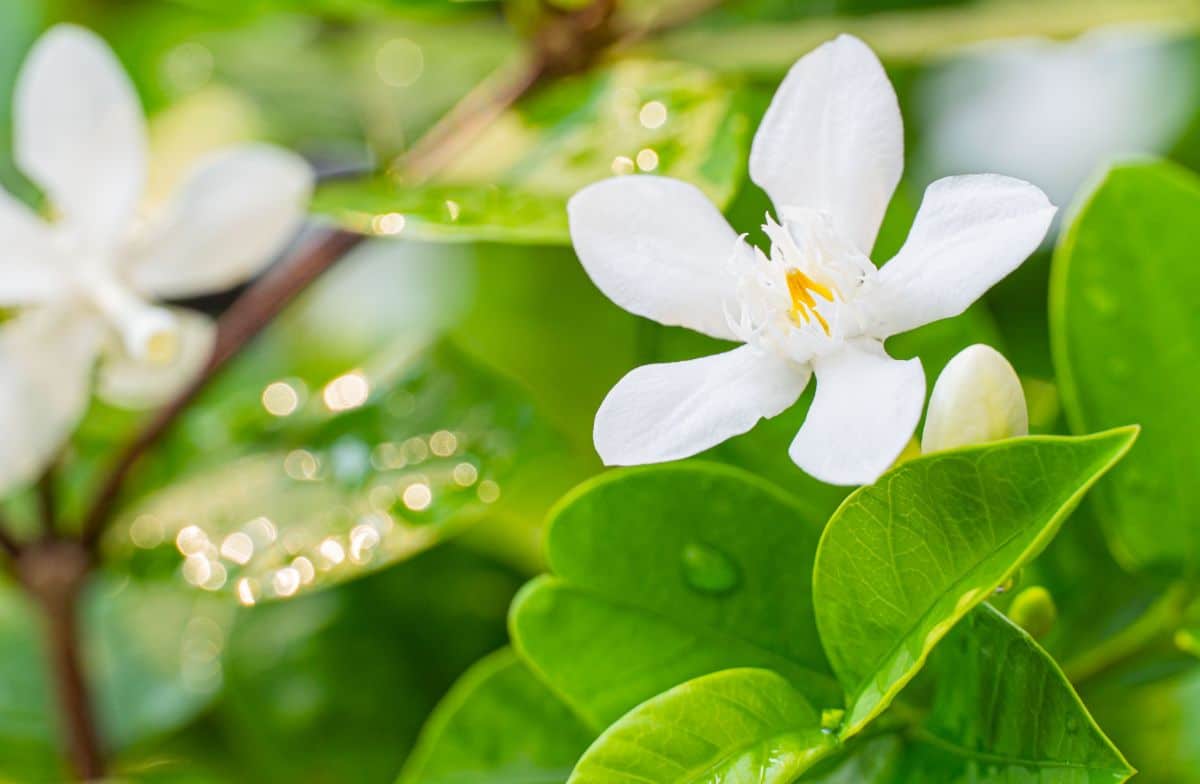
The name “gardenia” refers to a genus of plants with the same name belonging to Rubiaceae, better known as the coffee family.
The flowers of gardenia may be white or yellowish, and grow on evergreen shrubs. This genus also features some trees. Altogether, they add up to more than 200 species, plus plenty of individual cultivars.
Because the leaves of gardenias are dark green, they offset the white and yellowish flowers remarkably well, drawing the eye to each blossom.
Gardenia Basics
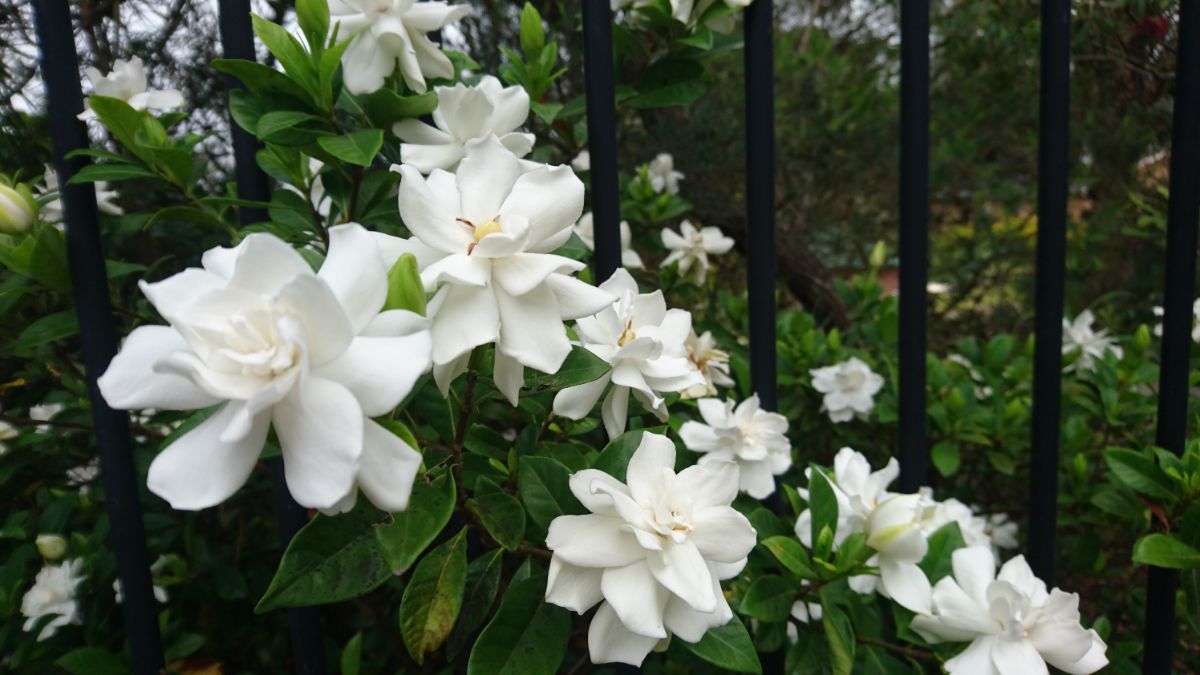
| Zones: | 7-11 |
| Blooming season: | Spring and summe |
| Expected height: | 2-15 feet |
| Soil: | Rich, moist, well-draining |
| Sun: | Full to partial |
Where Do Gardenias Grow?
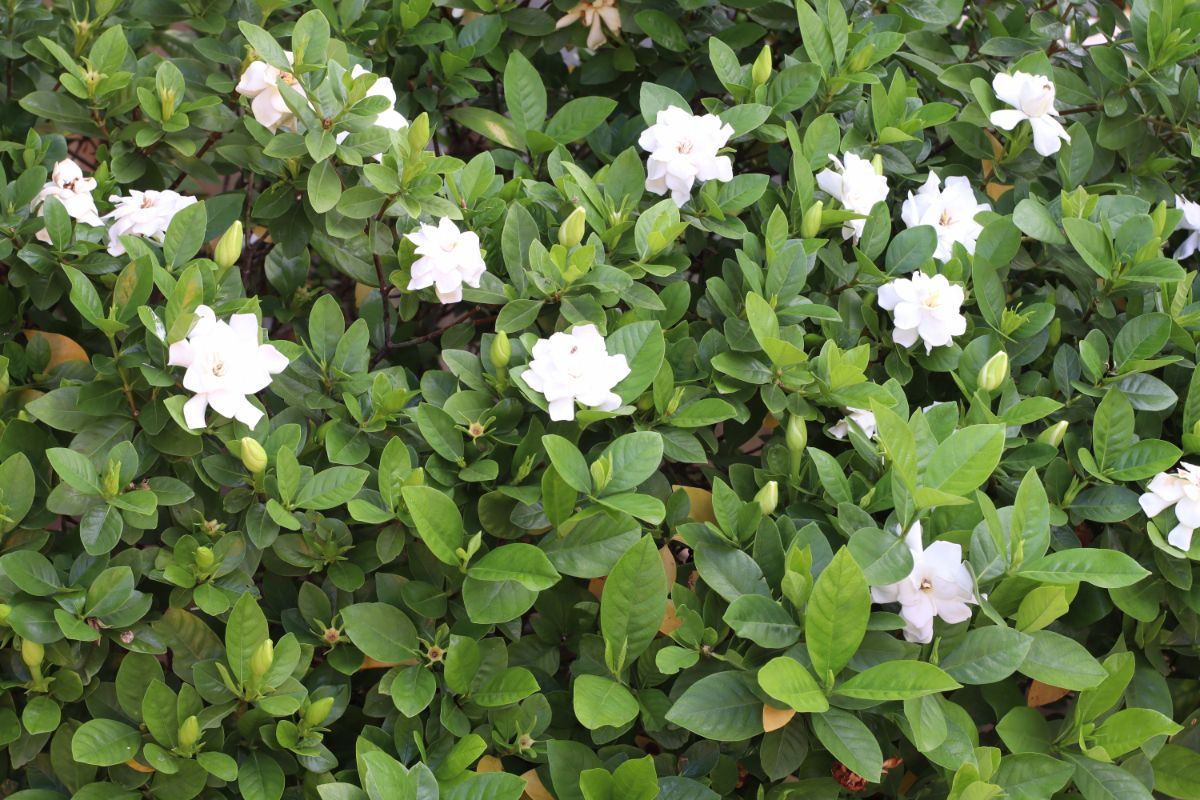
Gardenias are native to tropical parts of the world, including certain regions of Asia and Africa, as well as Australia, Madagascar, and the Pacific Islands.
Since gardenias may be grown successfully in zones 7 through 11, they have since been cultivated in other regions. They can do well throughout the southern US.
Why Grow Gardenias?
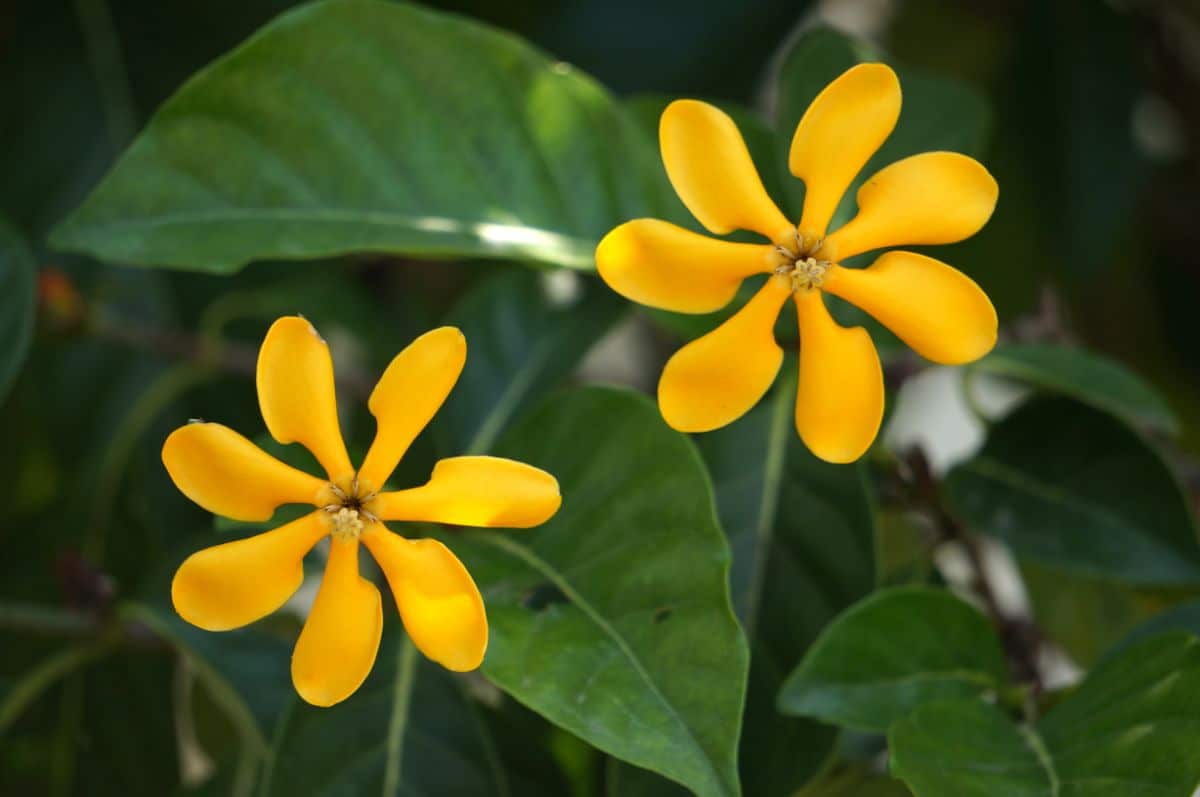
Some gardeners find gardenias a little bit intimidating. They can be fussy, and need more care and attention than some other perennials. But putting in the effort can pay off in many ways. Here are some reasons to give gardenia growing a go:
- Gardenias are available in an impressive size range. At the lower end, you have gardenias that grow to be only around 2 feet tall. But at the upper end, you can find gardenias that grow to be up to 15 feet tall and 8 feet wide! That means that if you have limited space in your garden, you can plant gardenias. But if you have plenty of space and are looking to increase your privacy, gardenias can also help.
- Even though gardenia flowers are always white or close to white, you can still find lots of cultivars with different appearances. You will be surprised by just how many bloom shapes there are as well as size variation in the blossoms.
- If you want, you can plant smaller varieties of gardenias indoors, and keep them there year-round.
- Gardenias make lovely cut flowers. You can incorporate them into arrangements, or just put one or more blossoms in a bowl of water. They will float on the surface.
- Deer and other mammals usually do not like dining on gardenias.
- Gardenias are prized as much for their fragrant scent as they are for their white flowers.
- You can enjoy the evergreen foliage of your gardenias even in the winter.
- Even though gardenias require some extra work with watering, pruning, and humidity, in other respects, they are actually easy. For example, you never have to divide them. This is not the case with a lot of other perennials.
Gardenia Landscaping Ideas
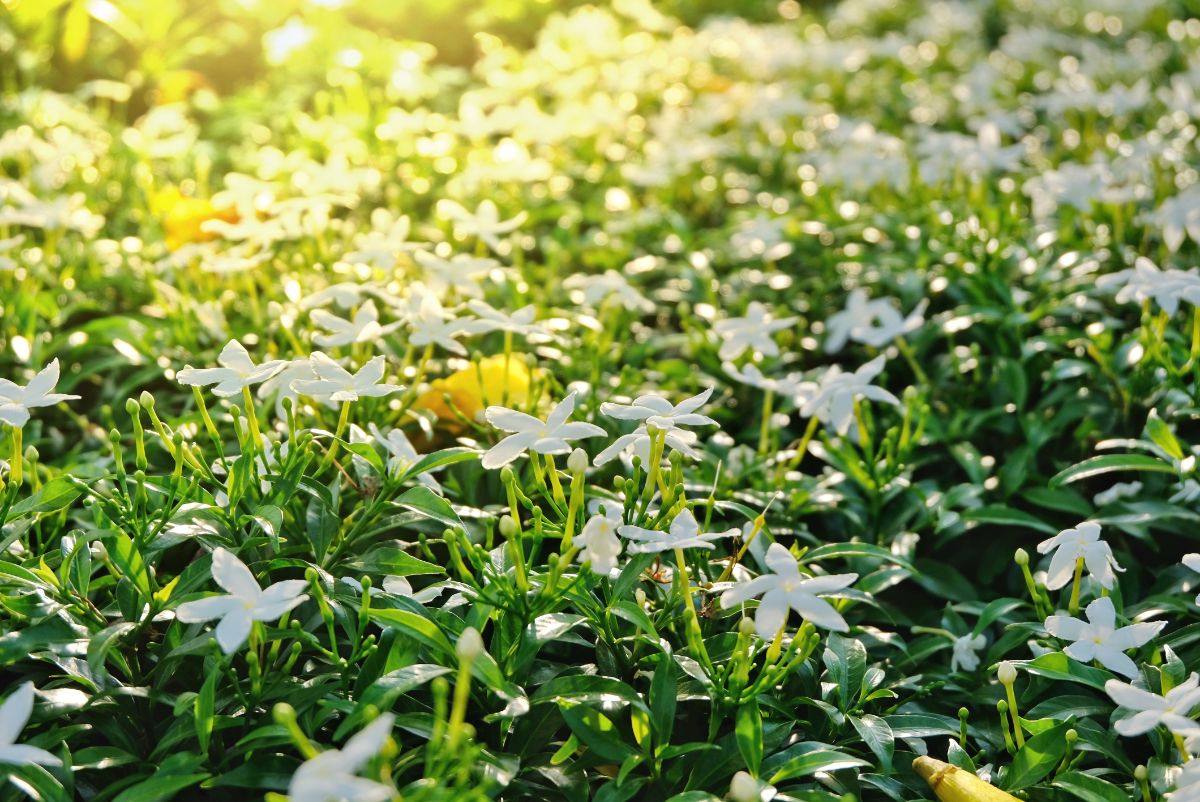
Ways to use gardenias in your landscaping abound! Few other perennials can claim this kind of versatility.
- Consider using gardenias as a backdrop for your other plants. Not only can they fill in large gaps in your garden and provide privacy, but their dark leaves can help to offset whatever blooms you plant in front of them.
- Plant gardenias close to your windows so the scent can waft inside (but only if you do not find the fragrance overpowering—some people do).
- Grow gardenias in containers indoors or outdoors. They can liven up your patio.
- Use gardenias to create hedges. They can give shape to your garden or line a path.
- Plant gardenias on their own as standalone focus plants in a landscape.
- Surprisingly enough, there are types of gardenias that work as groundcovers.
- Plant gardenias as part of a tropical garden.
Recommended Gardenia Varieties
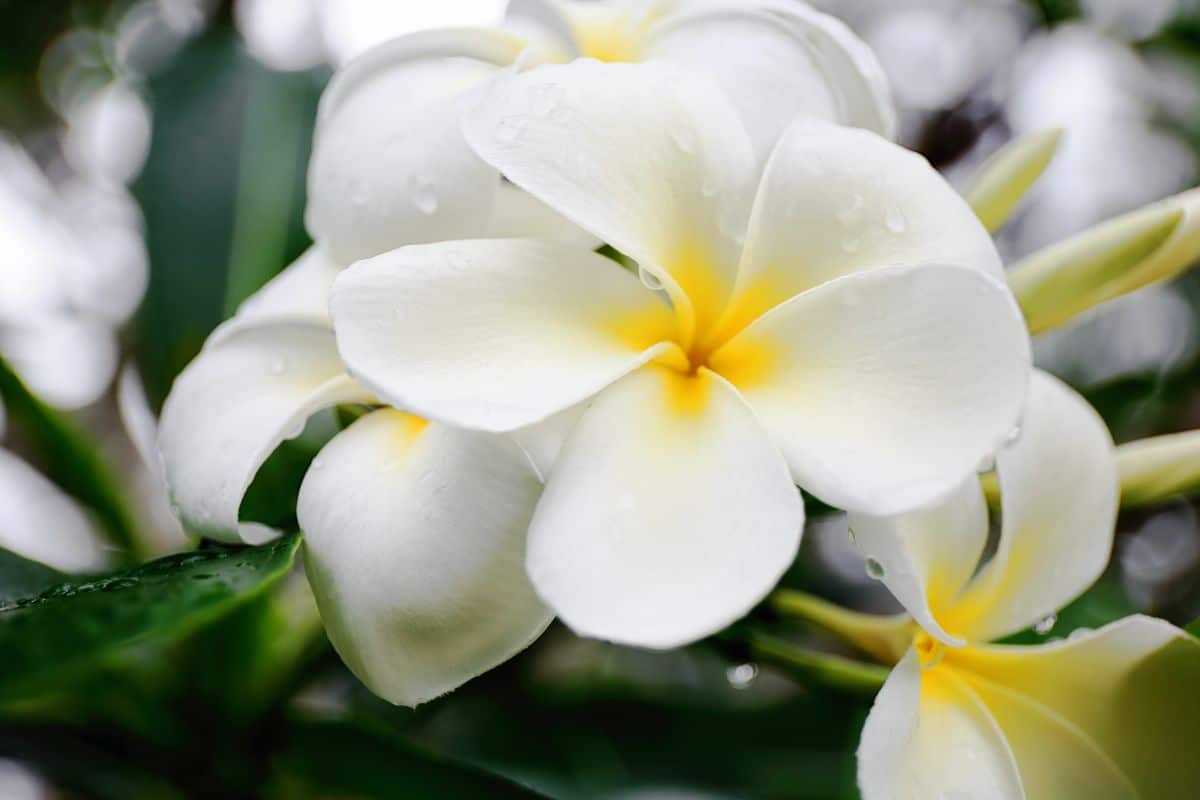
There are many varieties and cultivars of these fragrant flowers worth considering. Here are a few of our favorites:
- Kleim’s Hardy: This is one of the best dwarf varieties of gardenia for long bloom times. It blooms in summer, and then again in autumn. Since it can survive temperatures as low as 10 degrees Fahrenheit, it is suitable for cooler climates.
- Chuck Hayes: Another type of gardenia to consider for a cool location is this one that blooms twice per season, rewarding you with blooms every summer and fall.
- Aimee: This cultivar goes by several different names: “Aimee,” “Aimee Yoshida,” or “First Love.” The double flowers are an impressive 4-5 inches in diameter, blooming in late spring and early summer.
- Buttons: An option for growing gardenias as potted plants is the dwarf “Buttons” cultivar. The flowering season is late spring through early summer, and the attractive blooms feature button centers.
- Variegata: If you are looking for something that doesn’t just produce basic green leaves, you may enjoy the variegated green and yellow leaves on this type of gardenia.
- August Beauty: These fragrant plants have a long bloom season spanning spring through autumn, and produce stunning double blooms.
- Crown Jewel: Known as the “jewel of dwarf gardenias,” this plant tolerates cold conditions and grows in a spreading habit.
- Pinwheel: For really distinctive-looking blooms, consider this cultivar, aptly named for the shape of its flowers, which have long, narrow petals making them reminiscent of pinwheels.
- Veitchii: This lovely cultivar features breathtaking double flowers in spring and summer. It is among the oldest cultivars of gardenias.
- Mystery: For white flowers that turn a creamy color as the season progresses, think about “Mystery.”
- Tahitian Gardenia: One of the most unusual types of gardenia is the Tahitian gardenia, which actually comprises multiple cultivars. The flowers may vary in shape and even include yellow centers.
- Fortuniana: If you want a large cultivar of gardenia which produces a lot of double flowers, you will love “Fortuniana.”
When Do Gardenias Bloom?
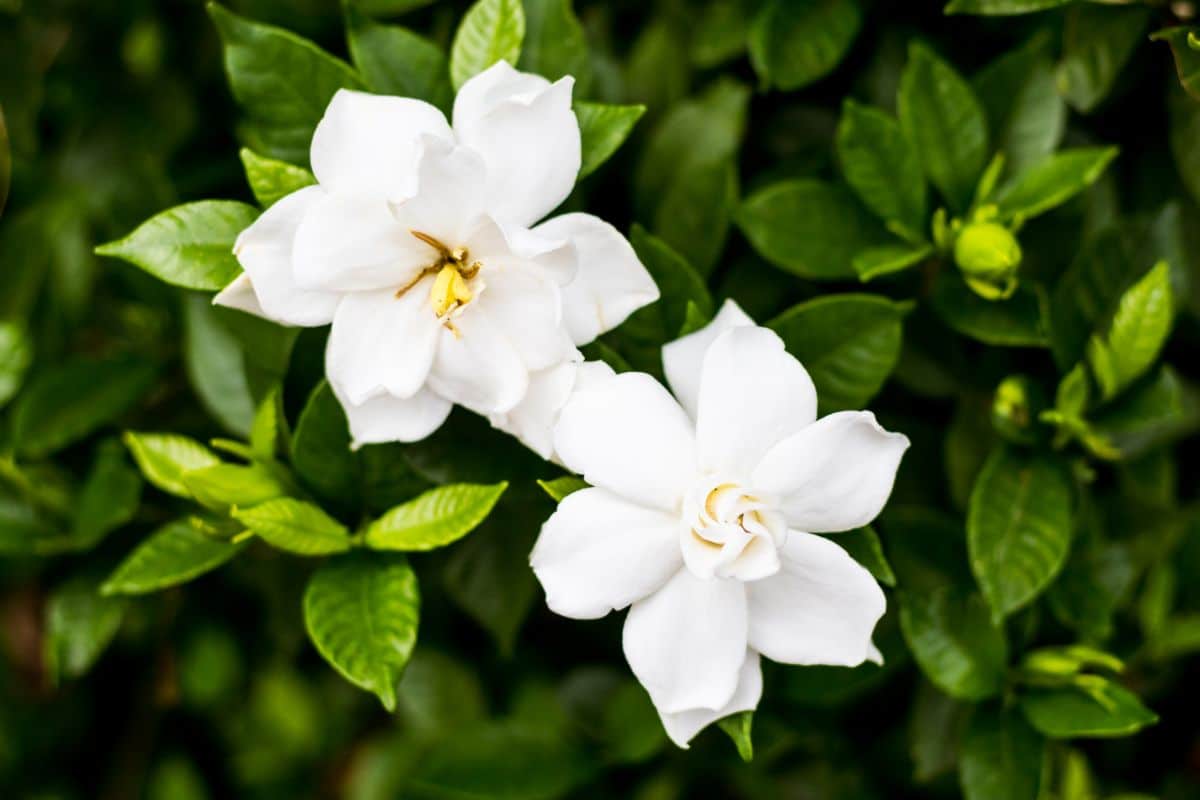
Some gardenias bloom as early as spring. Others bloom in summer, or even into the start of autumn.
How Long Do Gardenias Bloom?
Gardenias may bloom for a few weeks. The majority of gardenias only bloom once per season. But you can find some re-blooming cultivars.
When to Plant Gardenias
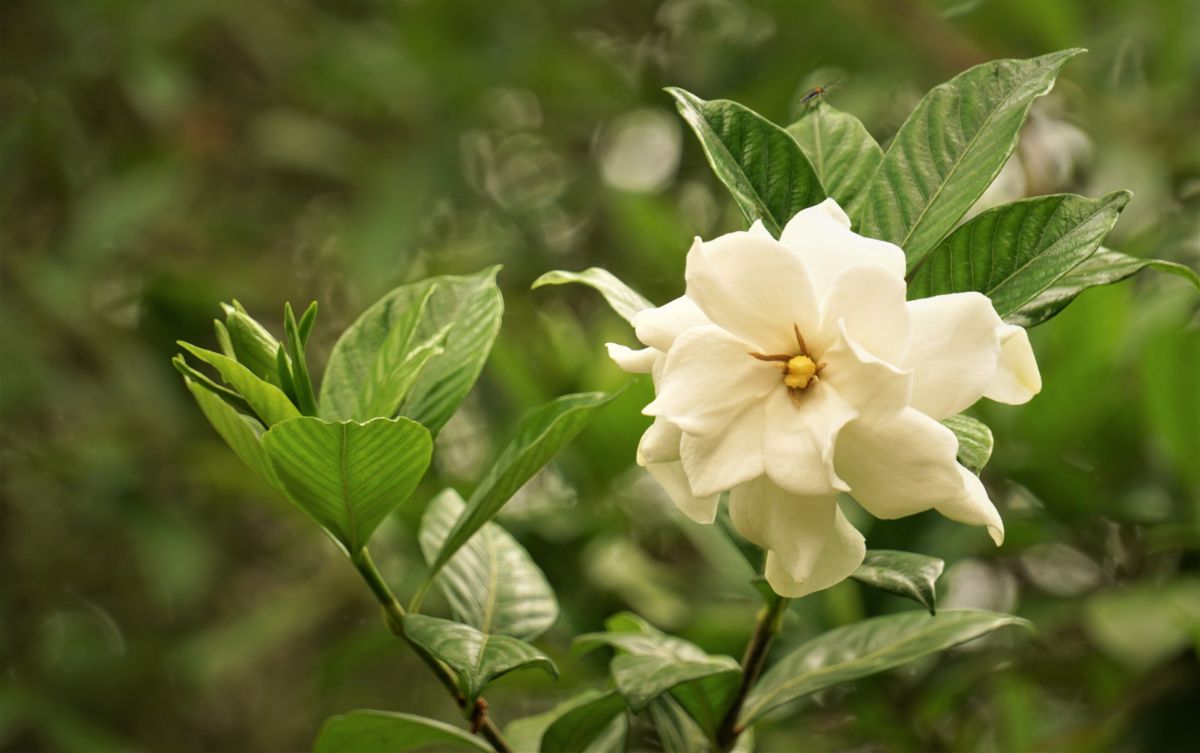
You can plant your gardenias in spring or autumn. The time to avoid planting is summer, when it is too hot.
Ideal Growing Conditions for Gardenias
To figure out where to plant gardenias in your garden, you need to know what their requirements are for sun, soil and water. Below, we go over their ideal growing conditions.
How Much Sun Do Gardenias Need?
One of the keys to growing gardenias successfully is to provide the correct balance of sun and shade.
Hot afternoon sun is bad for gardenias, but they do like direct sun sometimes in the earlier part of the day. So, choose a location where they can soak up some sunlight in the morning and have some protection from the hot sun later in the day.
While some exposure to full sun is fine, gardenias can do well in conditions where they are in dappled sunlight. So, if you have a forested yard, they should flourish under your trees.
What Type of Soil is Right for Gardenias?
Gardenias prefer well-drained, acidic soil. At the same time, it is bad for them to dry out, so, you want to retain some degree of soil moisture without conditions getting soggy.
If you need to improve the drainage of the soil and make it more acidic, one of the easiest ways to do this is by mixing in some compost. This will achieve both ends simultaneously. Peat moss does the same thing. Either way also enrich the soil, which gardenias also like.
How Much Water Do Gardenias Need?
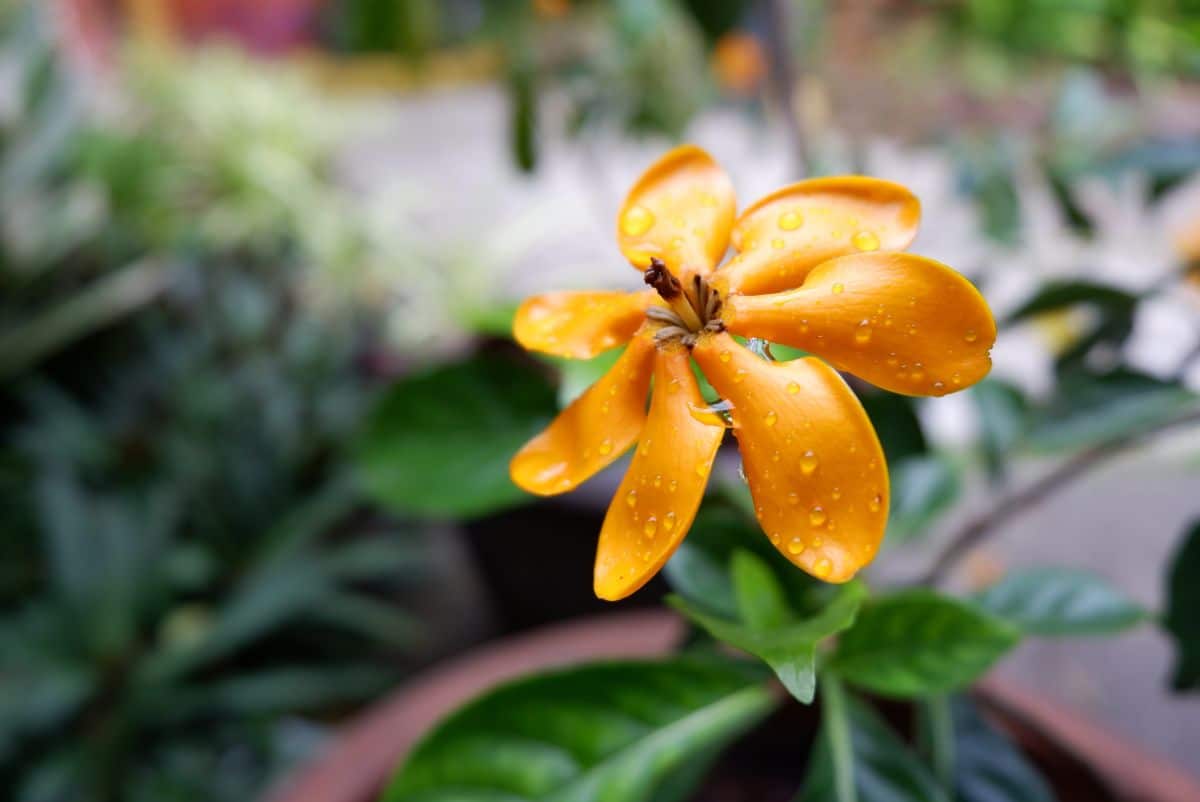
Moisture is very important for gardenias, so water plants religiously. They need roughly an inch of water weekly. If you are getting sufficient rainfall, Mother Nature may be able to take care of this sometimes. The rest of the time, you will need to water your gardenias yourself.
To protect the roots from injury, you need to avoid excess water. But you also need to make sure that the soil does not dry out. The moisture level needs to be as consistent as possible.
Gardenias require some additional attention in the water department that most other plants do not. Not only do they need moisture in the soil, but they also need humidity in general.
If conditions become too dry, you may need to take action. This can be as simple as filling a spray bottle with water and gently misting your gardenias.
What if you are growing the gardenia indoors, and it gets to be too dry inside your home?
One idea might be to run a humidifier. But if that is not a suitable option, you could instead get a tray to put under the gardenia container. Add some gravel to it and pour in some water. Over time, the water in the tray will evaporate. As it does, it will suffuse the air with humidity close to the gardenia.
Take note that if the pot is in the water itself, there can be issues, as mosquitoes may decide to start breeding there. Instead, it is best if the gravel or pebbles in the tray prop up the pot above the actual water.
You can rely on a spray bottle for misting indoors as well, as long as doing so will not get anything wet that shouldn’t be.
How to Plant Gardenias
You may grow gardenias from nursery plants, seeds, or cuttings. Propagating from cuttings is a faster method than growing from seeds if you want your new gardenias to flower as soon as possible. The instructions for container and ground planting below are for starting with a nursery plant.
Container Planting
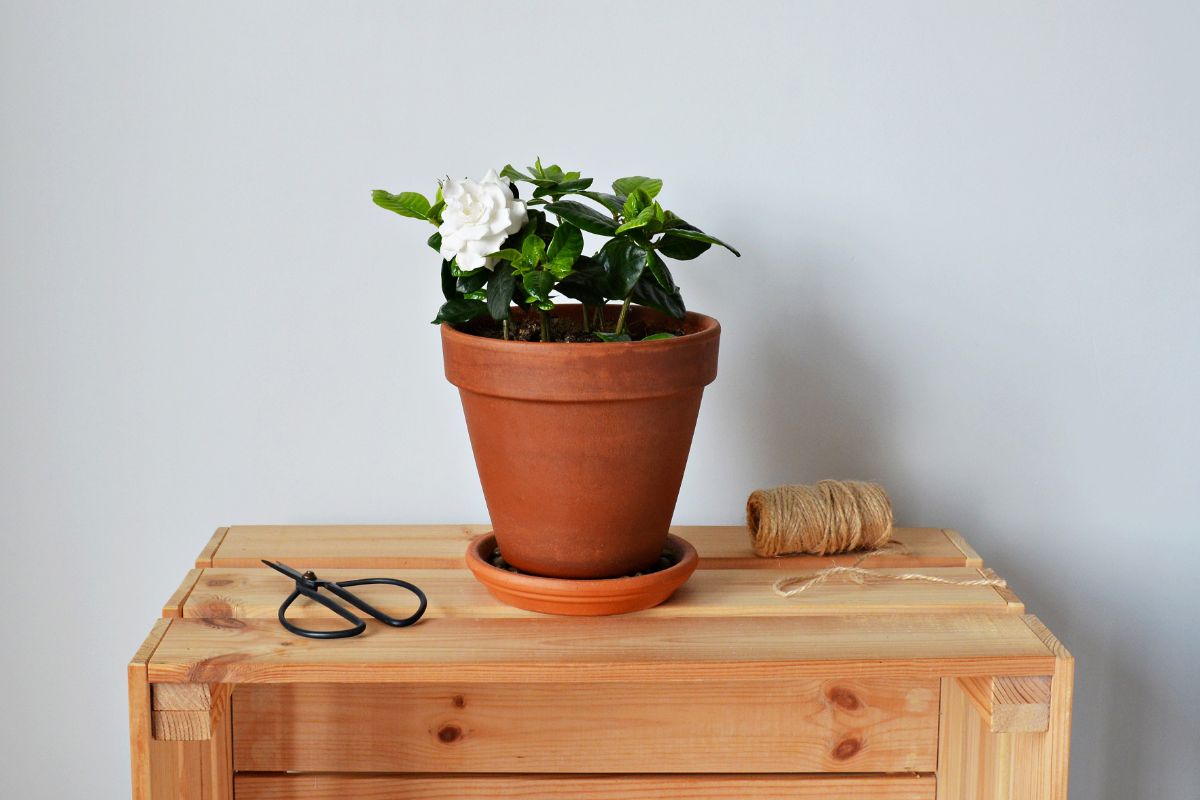
- Choose a large container for your gardenias. Each of these large plants will require a tub with a capacity of around 2-5 gallons.
- Line the container’s bottom with greenhouse shade cloth. The cloth will act as a filter, keeping the soil from clogging up the holes for drainage. If you want, you can even go a step further, putting a layer of stones in the pot followed by the shade cloth and then the soil.
- Fill the bottom of the container with potting soil. Consider adding some perlite to your potting mix if it does not drain sufficiently. Pumice also works.
- Now, you need to transfer the gardenia from the pot it came in to your container. This is a little more involved than it is with most plants, as gardenias have hefty root balls, and are often already root-bound when you buy them.
It may be difficult to lift the plant free of its original container. Nonetheless, you must try to be gentle as you do. Tapping on the nursery pot may help. In some cases, however, it is just not possible to pull the plant loose. The solution in these situations is to remove the container using shears (just cut through the pot and destroy it, freeing the root ball).
If the roots are tightly clinging together, loosen them up as best you can. Now, you can finally set the root ball inside your new container.
- Fill in the soil around the root ball of the gardenia. There should be around an inch between the container rim and the top of the root ball. The soil itself should be at the level of the top of the root ball. Tamp the soil down.
- Water the newly-planted gardenia deeply.
Your gardenia will need extra water while it is establishing.
Ground Planting
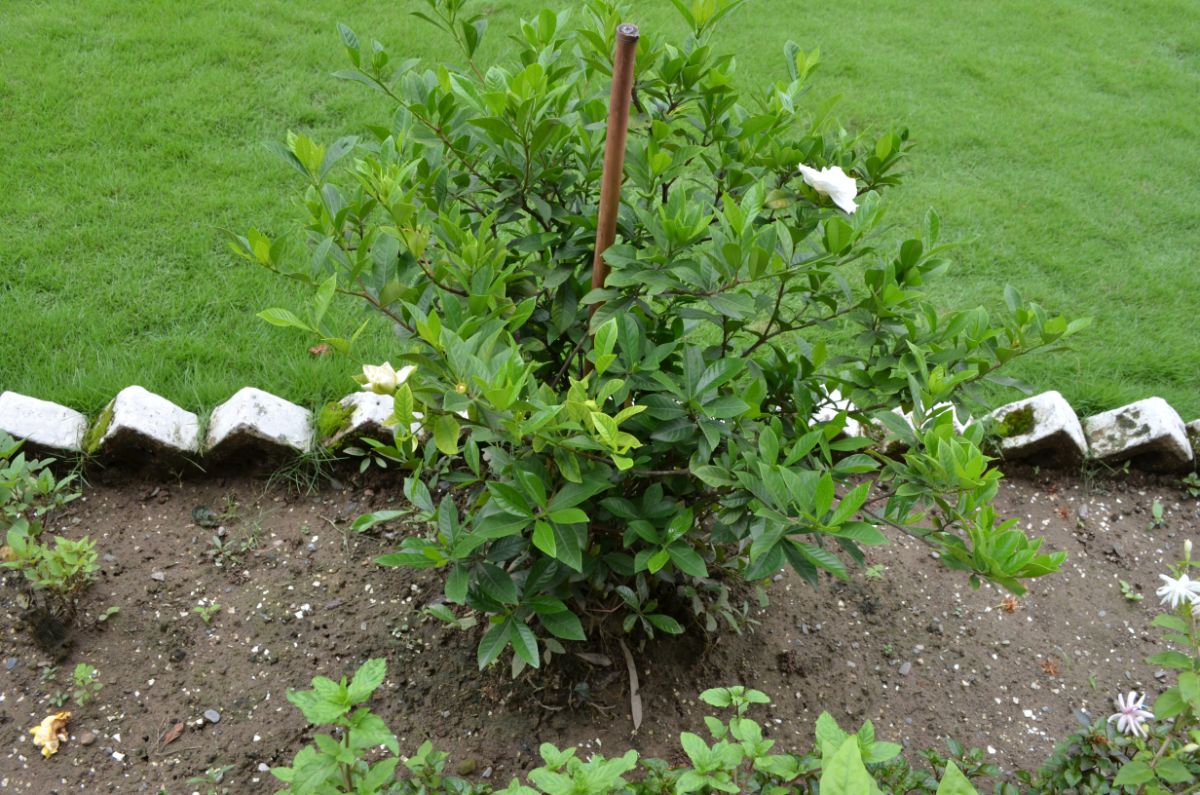
Now you know how to plant gardenias in your container gardens, but what about in your garden beds?
- Choose a spot in your garden, and get the soil ready. As we mentioned earlier, this might involve mixing in some compost or peat moss, depending on existing conditions.
- Dig holes for your gardenias. Depending on the cultivars you are planting, you might need anywhere from 3-8 feet of space between each of them for sufficient airflow.
Each hole should be about the same depth as the root ball itself. The width should be several times that of the root ball.
- Now comes the part where you pry the gardenia plant out of the container it arrived in. You already know how to do that from our instructions above for container gardens.
- Once again, loosen the root ball a bit, and then set it in the hole. Backfill the soil around the root ball.
The ideal level of the root ball with respect to the ground depends on what type of soil you have. In moderately-draining soil, you should plant the root ball so the top of it protrudes a couple of inches above the level of the ground, with the soil piled up around it. If your soil drains well, however, it should be roughly even with the ground.
In either case, the very top of the root ball should not be covered.
Fill in the soil gradually, tamping it down as you do. You will need to stop and water when you are about halfway done. Then, continue filling in the rest of the soil until you are done.
- Water the gardenia deeply.
Be sure to water regularly while your gardenia is establishing.
Starting Gardenias from Seed
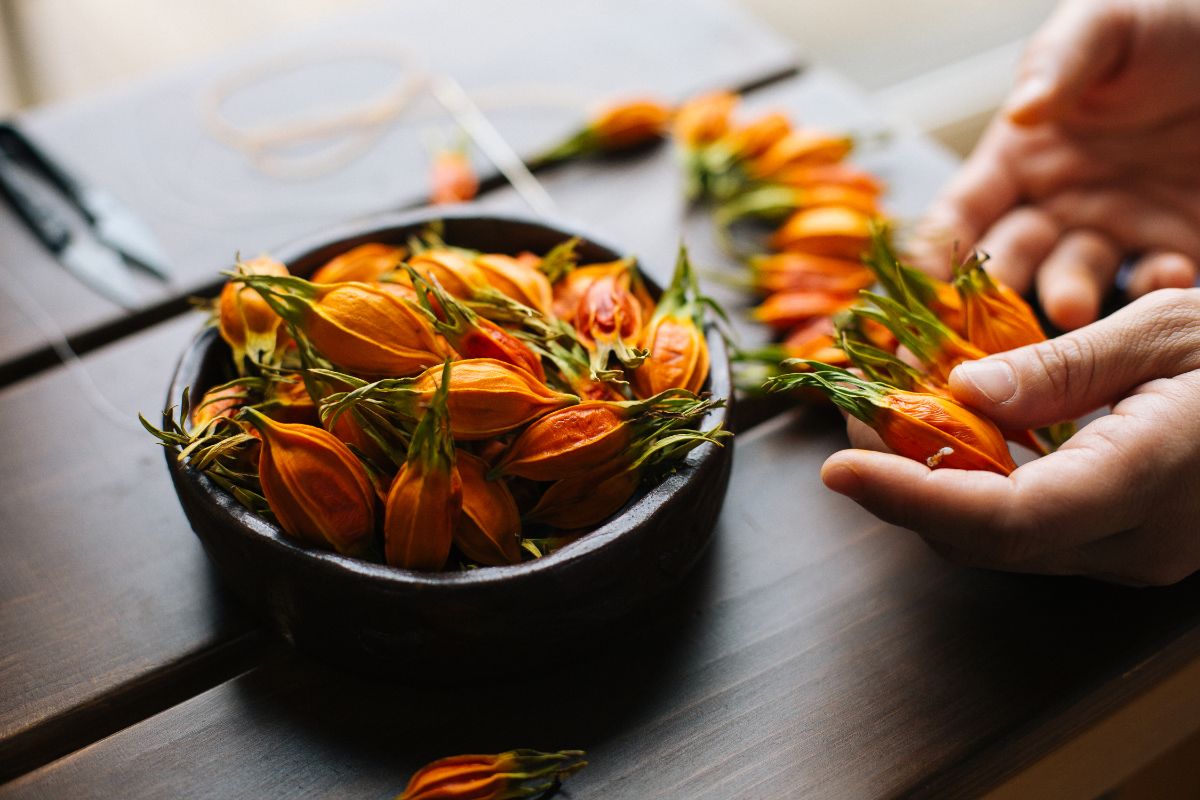
If you want to propagate gardenias from plants already in your garden, you can do so by collecting and starting them from the seeds.
- To get the seeds, harvest the seed pods from your garden when they are about an inch and a half wide. Open up the pod, and then remove the seeds.
- Prepare the seeds. This involves first rinsing them, then drying them. The drying process takes around a month.
- Get some seed starting trays/pots and fill them with potting mix. A 50/50 ratio of peat moss and perlite works well.
- Thoroughly soak the potting mix in the containers, and then wait for it to drain.
- Put the seeds in the pots. They should be very lightly covered.
- The potting mix should still be moist at this point, so there is no need to moisten it again right away. Cover the trays to maintain moisture levels, and choose a spot for them where they will not receive direct sun.
- Check periodically on the trays to see how the seeds are coming along and to check the moisture of the potting mix. Spray it when needed. In around 4-6 weeks, you should see the seedlings growing.
- Remove the cover from the seedlings so they have room to grow. When they have 2-3 sets of leaves, they are ready for transplanting to their permanent homes.
- If you are moving the gardenias outside, do not forget to harden them by moving them between indoors and outdoors repeatedly so they can adapt.
- Water well after transplanting, and continue to provide extra water as your gardenias are establishing.
Starting Gardenias from Cuttings
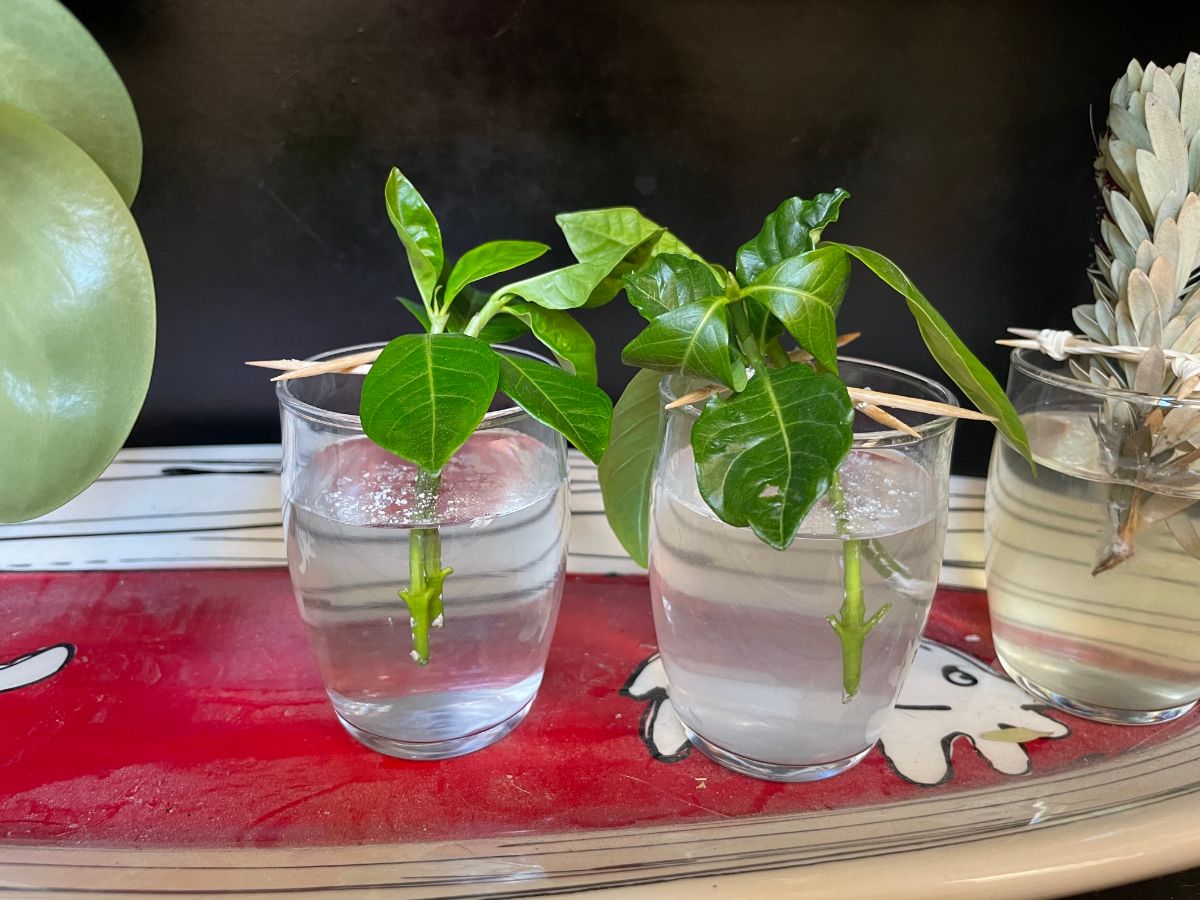
Another popular method for how to propagate gardenias is to take cuttings from the plants in your garden.
- Take the cuttings from green wood. Each one should measure about 5 inches.
- Leave the top 2 sets of leaves in place, and remove all the leaves below from each cutting.
- Get pots for your cuttings and fill them with potting mix. A mixture of sand and peat works well.
- Dip the lower ends of each of your cuttings in rooting hormone.
- Gently push the cuttings into the potting mix. Backfill and tamp down as necessary so they stand upright. Moisten the potting mix with a spray bottle.
- Choose a location where your cuttings can root away from direct sun. Around 75 degrees Fahrenheit is an ideal temperature.
You may want to cover the cuttings so that moisture is retained. But ensure that the bag you use to do this does not touch the cuttings. You might need to prop it up with some stakes.
- Check under the bag now and again to see if the soil is still moist. If it is drying out, moisten it again. Continue to do this for 4-8 weeks as you wait for your cuttings to root.
- Transplant your new gardenias.
Once the roots have had enough time to develop, you can transplant the new gardenias in their permanent containers or your garden beds.
Be sure to harden them before you move them permanently outdoors, and water them extra as they establish.
How to Care for Gardenias
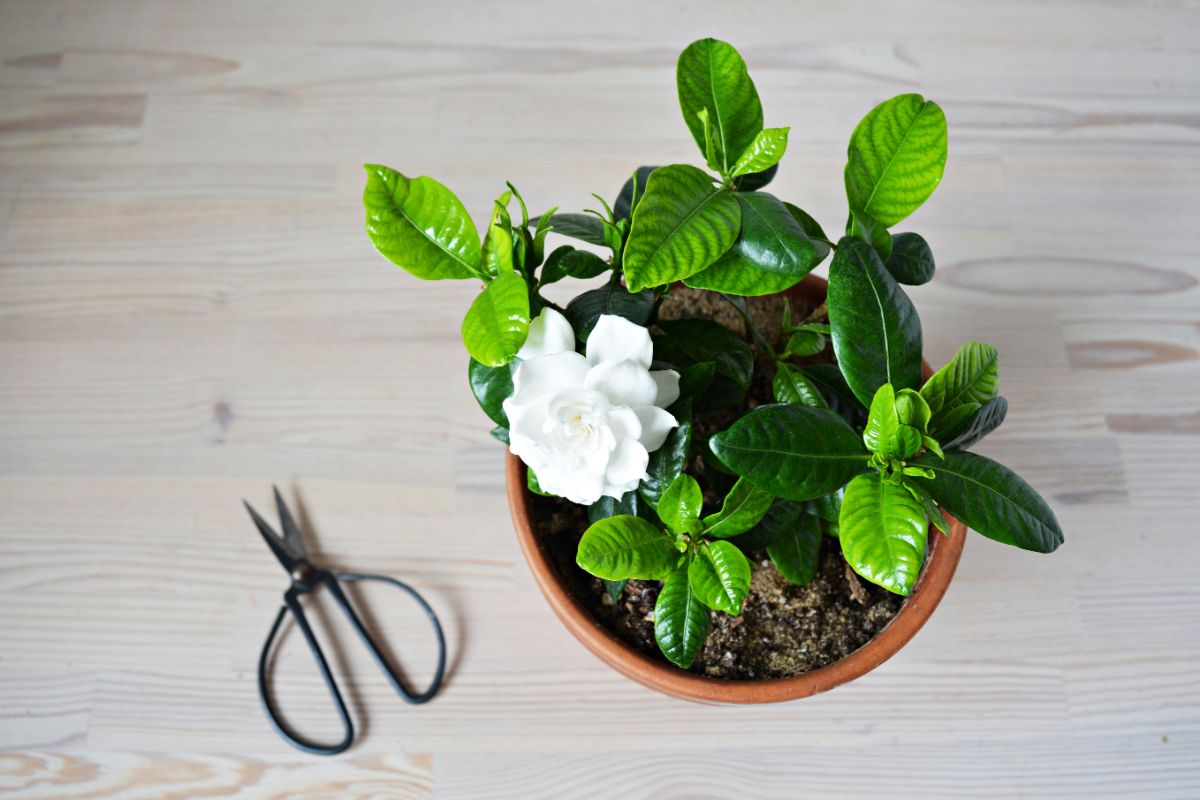
After planting your gardenias, ensuring they are healthy and provide you with beautiful blooms each year requires proper care. Learn how to fertilize, mulch, prune and stake gardenias below.
How to Fertilize Gardenias
Clemson Cooperative Extension Home & Garden Information Center offers detailed recommendations for feeding your gardenias.
The site says, “Fertilize gardenias lightly in the spring once frost has passed with a well-balanced, extended-release, acid-forming, azalea fertilizer. Fertilize the shrubs again 6 weeks later to encourage extra flowers or faster growth of young shrubs. By well-balanced, this means to look for nutrients in the ratio of 2-1-1.”
The site continues, “Complete, acid-forming organic fertilizers are also excellent choices for use on gardenias for spring and early summer fertilization. They are typically not as nutrient rich, and because of both the low nitrogen content and their inability to burn the roots, they can be mixed lightly into the soil in the fall at planting to enhance root growth.”
If you visit the page linked above, you can read additional suggestions about proper fertilization of gardenias, plus a list of recommended specific products to try.
How to Mulch Gardenias

Because moisture is so critical to gardenias, it is important to mulch them. Doing so will help the soil to retain moisture, and will keep growing conditions more consistent.
Some materials that are suitable for mulching gardenias include shredded bark, wood chips, sawdust mulch or pine straw. 2-3 inches of depth is ideal. You can mulch your gardenias right after you plant them.
How to Stake Gardenias
You may sometimes have to stake your gardenias, especially if you are growing cultivars that produce particularly heavy blooms.
You will need fairly tall stakes for your gardenias, since they can be quite tall when they reach their full heights.
Because these plants can also be quite wide and require propping up in a number of places, you also will likely require multiple stakes for each. Consider using green stakes so that they blend in with your gardenias and are less conspicuous.
Drive the stakes down into the ground (or into the soil in your pots, if these are container gardenias), making sure they are about a foot down if possible. This will give them the stability they need to offer adequate support.
The last step is to tie the heavy branches with twine to the stakes.
How to Prune Gardenias
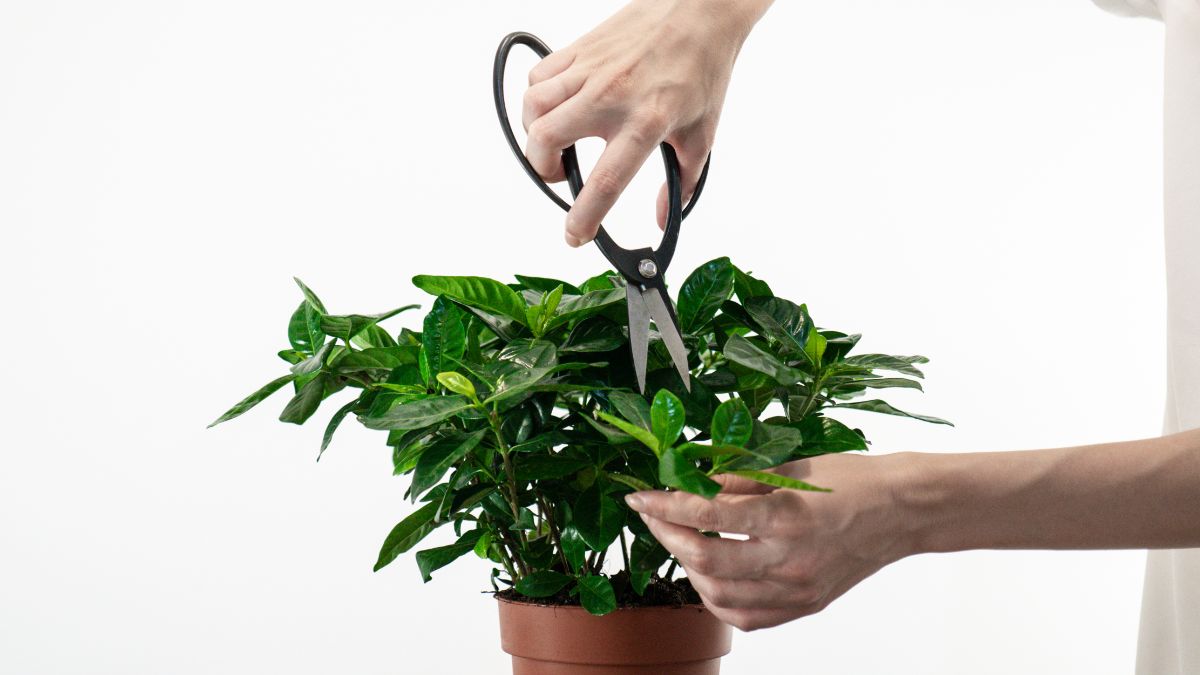
Pruning is another area where gardenias may require significant maintenance. Kent D. Kobayashi and Andrew J. Kaufman at the University of Hawaii at Manoa write, “Prune to keep plants compact, in proper shape, and in scale with the landscape. To maintain plants at their optimum, prune out dead wood, straggling branches, and faded flowers. Young plants growing vigorously during their first year may be pinched back at the growing points to encourage heavy branching; this prevents scraggly growth and promotes a more compact plant. The best time to prune is after flowering, because pruning earlier removes flower buds. Follow pruning with an application of fertilizer.”
How to Deadhead Gardenias
Deadheading gardenias—removing spent blossoms—can be beneficial for several reasons.
For one, you might have a re-blooming variety. If this is the case, deadheading may encourage a second flush of blooms.
For another, deadheading helps gardenias to fill out beautifully for a nicer appearance.
Finally, you might want to deadhead if you are trying to prevent the plant from going to seed.
How do you deadhead gardenias? Just use garden shears to snip off the blooms when they are faded. Try and cut above leaves, not below them.
When to Cut Back Gardenias
You can trim back gardenias in autumn or winter if you want to prevent them from getting too large or if you want them to produce denser foliage next season.
How to Divide and Transplant Gardenias
Gardenias can have a difficult time adjusting if you have to transplant them. So, when possible, you should avoid doing so. Not only that, but gardenias do not need to be divided. They will continue to grow happily and produce bountiful blooms year after year with proper care.
What about dividing them to propagate them? This may not even work. Again, gardenias do not appreciate transplanting, and you can be sure they will hate being divided. Indeed, they may not even survive the process.
And again, it simply is not needed. You can propagate from cuttings and seeds, as we discussed.
Are Gardenias Vulnerable to Diseases or Pests?

Gardenias may have problems with root rot, stem cankers, powdery mildew, sooty mold, and other diseases. Clemson Cooperative Extension Home & Garden Information Center offers a comprehensive description of these and other gardenia diseases as well as recommendations for treating them.
Some pests that can infest gardenias include citrus whiteflies, melon aphids, Japanese wax scales, two spotted spider mites and nematodes.
You can view this page at NC State Extension for more information about these gardenia pests and specific suggestions for controlling each of them.
There are some reports that suggest that slugs and snails may get into gardenias, but this does not seem to be a major problem for most gardeners.
Are gardenias deer-resistant plants? Yes! They also do not seem to be a favorite of other mammals like rabbits. That does not mean that deer or rabbits will never consume gardenias, but they are unlikely to if there are other more appealing food sources nearby.
Recommended Planting Combinations for Gardenia
Here are a few plants that can grow well with your gardenias:
- Azaleas: Azalea bushes thrive in the same soil conditions as gardenias, and can handle partial shade. They blossom in spring, and as sizeable bushes, they will not be overwhelmed by large gardenias.
- Hydrangeas: These spring and summer bloomers can flourish in rich, acidic soil next to your gardenias. Moreover, they share the same preference as gardenias for morning sun and afternoon shade.
- Rhododendrons: If you have your gardenias in a sunnier spot in your garden, rhododendrons can make a nice accompanying plant.
Frequently Asked Questions About Growing Gardenias
What eats gardenias?
A: It is most likely that some type of insect is responsible for eating your gardenias. Check the section on diseases and pests for more information.
Are gardenias evergreen?
A: Yes, they are! You can look forward to enjoying their foliage year-round.
Are gardenias acid-loving plants?
Yes! We also see a lot of people asking, “Do gardenias like Epsom salts?” and “do gardenias like coffee grounds?”
The answer to both of these questions is also “yes.” The gardenias will appreciate the potassium, nitrogen and magnesium in your coffee grounds as well.
Are gardenias annual or perennial?
A: Gardenias are perennials. They come back year after year with beautiful flowers.
Where to Buy Gardenias
If you are ready to start growing these perennial shrubs in your garden, click the link below to shop gardenias online now.

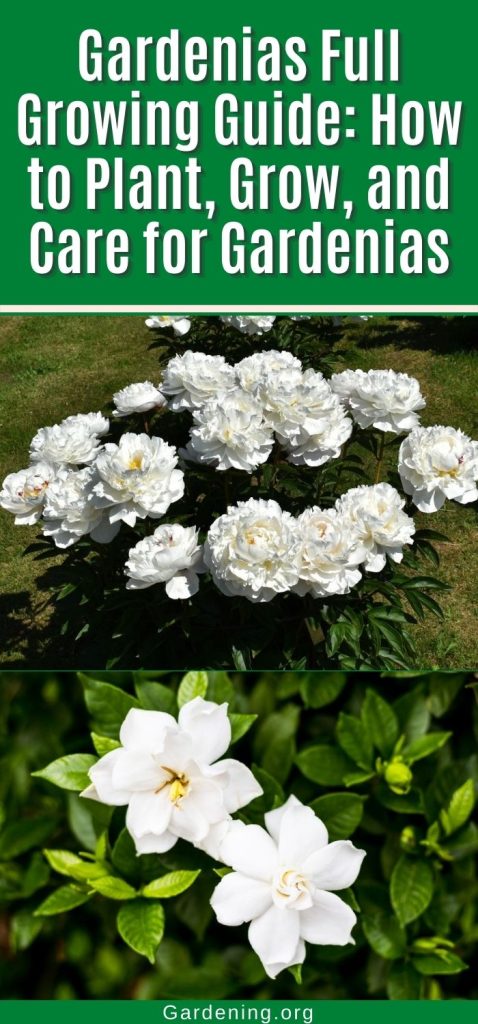
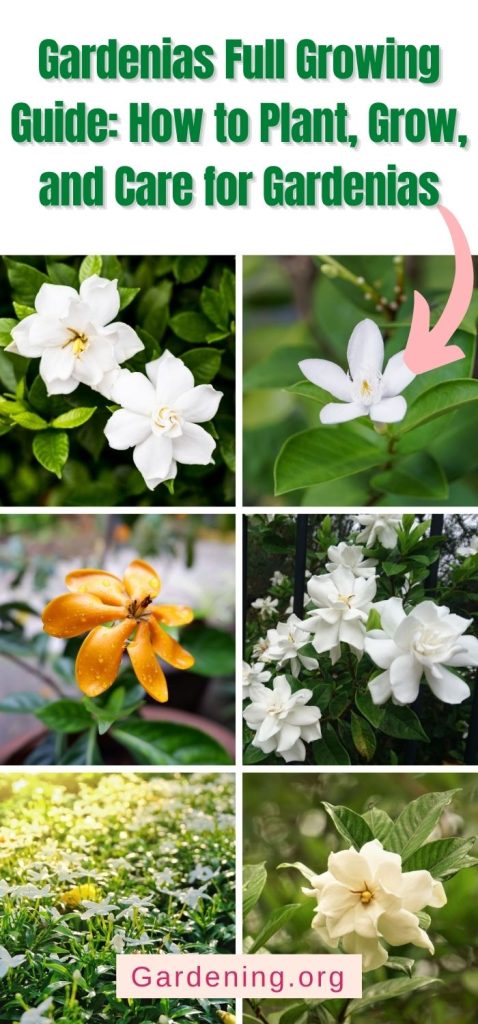
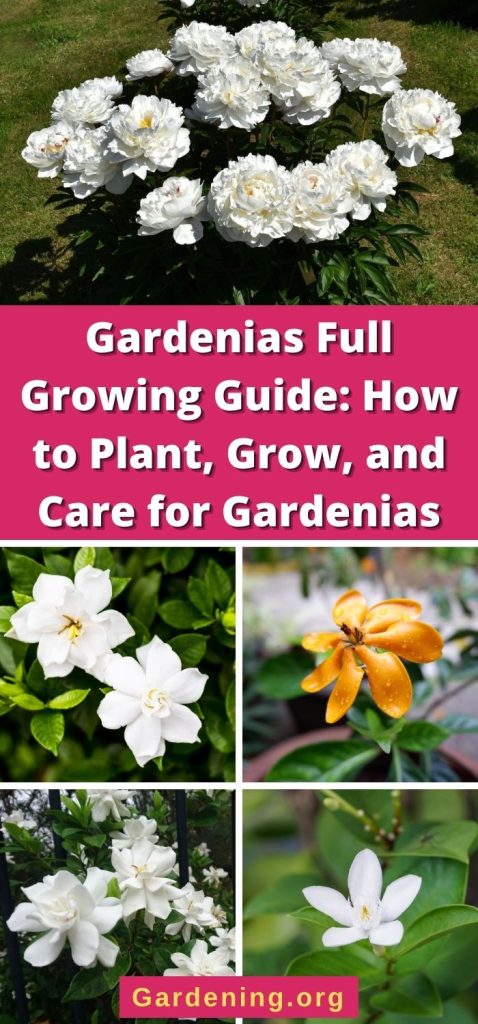
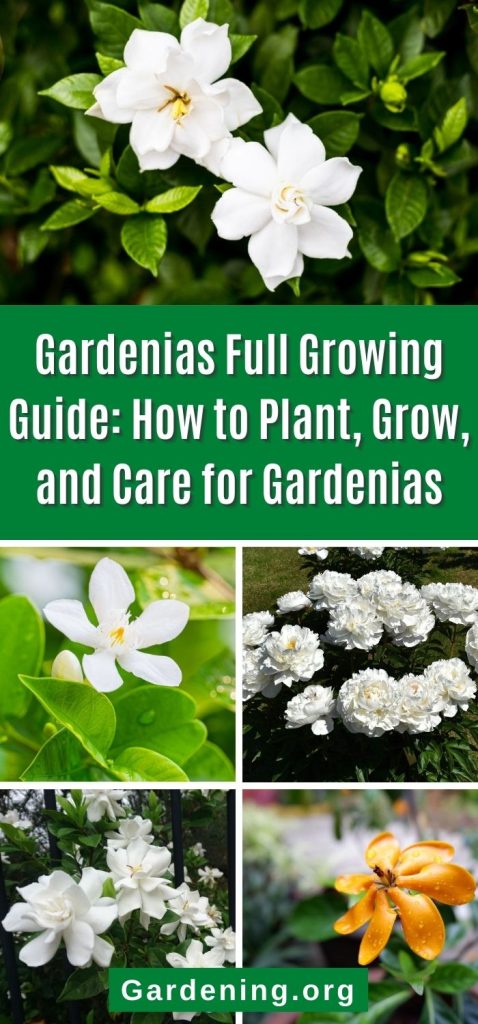
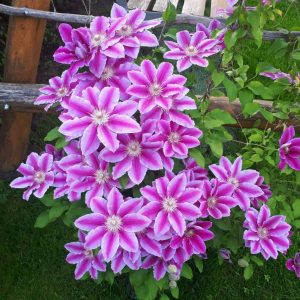
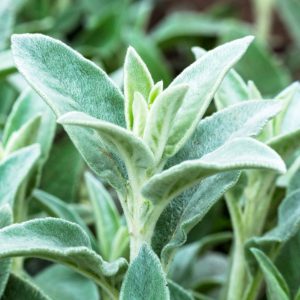

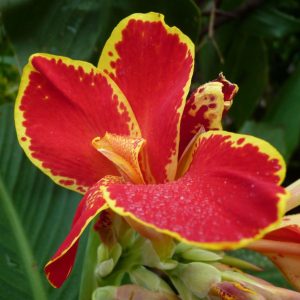
Leave a Reply